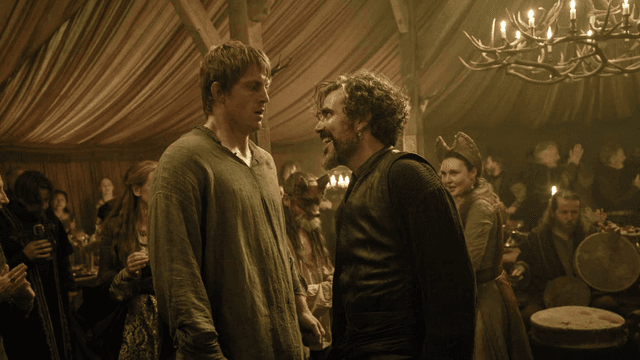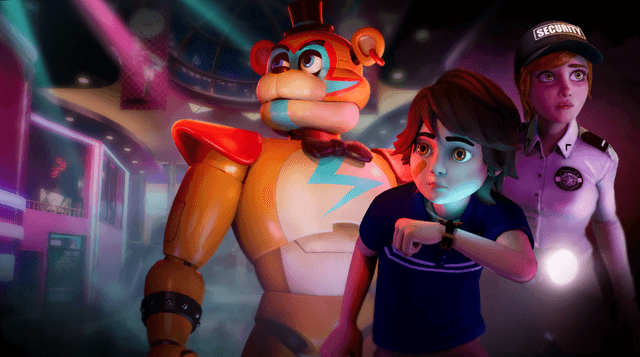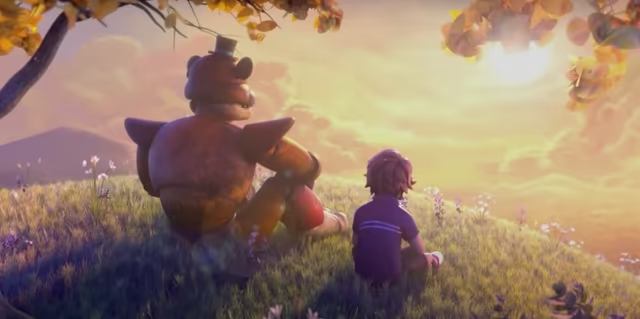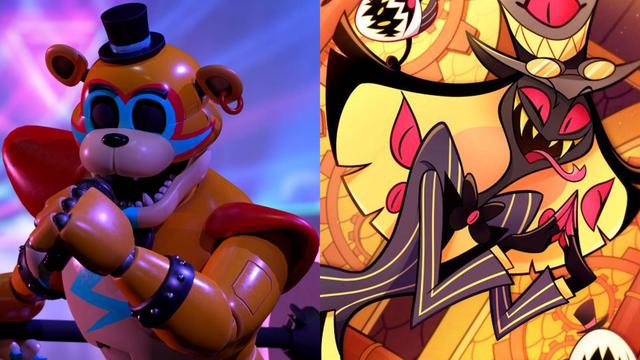If you click on a link and make a purchase we may receive a small commission. Read our editorial policy.
D&D: How to play Dungeons & Dragons
All you need to know to start playing pop culture’s favorite roleplaying game, Dungeons & Dragons

Thank you to Misty Mountain Gaming for sponsoring this article. Popverse was paid for our time in creating this.
Beneath the groundswell of fantasy fiction between Lord of the Rings and Game of Thrones to Conan the Barbarian, and more, sits a game that in many ways set the stage for their popularity - and gives people the ability to create their own epic. Dungeons & Dragons (or D&D) is the definitive tabletop RPG game, mixing sword, sorcery, and storytelling into one of the most engaging experiences you can have.
Part performance and part creativity, D&D has been going for almost half a century - and shows no signs of slowing down, especially ahead of the eagerly-awaited movie Dungeons & Dragons: Honor Among Thieves. But how do you play it?
Don't worry, we have you covered with a beginners guide to D&D - whether its your first campaign, or you've been away for awhile.
This article is sponsored by Misty Mountain Gaming. Misty Mountain Gaming isn't just a dice company, as tabletop gaming is their lifestyle. They are gamer-first, and relish the idea of being part of our next epic adventure.
What is D&D?

Dungeons & Dragons is a tabletop roleplaying game first published in 1974, originally designed by Dave Arneson and Gary Gygax. Its fantasy worlds are inspired by world mythology, fantasy novels, and comics like Conan the Barbarian. It’s recognized as the beginning of the RPG genre and has influenced countless video games and other media. Since then, the game has changed and improved a lot over multiple editions, and more people than ever are playing it. The game itself is many things, but at its core, it’s always been an immersive game of make-believe, where four players assume the roles of fictional characters they come up with, and one player guides them through an adventure as the dungeon master (DM).
The DM is the narrator and referee who describes everything in the game apart from the players’ characters. They act out non-player characters, control the environment, enemies in combat, and any other challenges that might threaten or interest the players in a fun, engaging way. Unlike your average board game, the story is ongoing, and you’ll pick up each session where you left off last time. For adults to enjoy playing pretend, we need rules (and lots of them). That’s where games like D&D come in, with a system of rules and mechanics that can support a wide variety of scenarios that might happen in a story, and introduces the element of chance with dice.
Getting started with D&D

You may know that there are multiple versions of D&D, but just about everyone would recommend you start with the current edition, '5e' or '5th edition'. There are prior editions and similar games you might want to try in the future, but 5e has the advantage of the highest number of active players. If you search the internet for D&D related information, the results will normally be for 5e, and there's a wealth of guides, wikis and advice columns out there to help you out. It's worth noting they're working on a new edition to come out in 2024, but it's expected to be highly compatible with 5e and nothing to worry about for new players. The rest of this guide will assume you'll be playing D&D 5e.
Before anything else, go ahead and download the free Basic Rules PDF and browse through it. You may notice that it’s almost 200 pages, but don’t freak out. It’s a reference book, and plenty of people who play have never even read it. Everyone should read (not memorize) Part 2, which is all about the rules and how the game works. Players need them to strategize and understand what the different options actually do in character creation, and the DM needs them to referee and make good decisions for their adventure prep. Players need to read Part 1, which takes you through the process of making your character step-by-step. If you’re playing a spell caster, you’ll want to read Part 3 as well, which lists and describes the base spells and how spellcasting works in general. Part 4 is just for DMs, with chapters for monsters, creating combat encounters, awarding experience and treasure, and some other info.

You’ll also need a set of polyhedral dice, and players will need character sheets to fill out. You can also make your character in D&D Beyond. It’s an official D&D website / app that guides you through the process and makes an interactive character sheet with trackers and digital dice you can access anywhere on your computer, phone or tablet. For many of us however, nothing beats the feel of dice, pen and paper.
Go through Part 1 of the Basic Rules and fill out your character sheet, or go step-by-step on D&D Beyond. Don’t be afraid to look up character builds other players have made on the internet and finish customizing them to your liking. All the different options can be daunting, and these can take out a lot of the guesswork and might have a unique play style or theme that will make the game more fun for you. The last things you’ll need are patience and imagination. Don’t worry too much when you’re starting out. It’ll be fun to try with your friends, and you’ll get 'better' at it the more you play.
Next steps to play D&D

Now you’ll need to get your group together, and decide who’s going to be the DM. It’s recommended to have a DM and four players when you’re starting out because the published adventures are balanced for that many, but the DM can always adjust things if you need more or fewer players. If you’re planning to be the DM, just make sure you have time to do it, because the prep for a session can take as long or longer than the session itself. The DM is often the de facto leader and organizer of the group, communicating with everyone to decide time and place for game sessions and helping them get started playing. You can start by making a chat group to figure out what sort of game you’d all like to play, pitching different ideas and settling on something the DM can start preparing.
Unless you have your heart set on a particular adventure, I’d recommend one of the official 5e Starter Sets or the Essentials Kit. They all come with the basic rules, dice and character sheets, but there are three adventures to choose from: Lost Mine of Phandelver, Dragon of Icespire Peak, and Dragons of Stormwreck Isle, all of which feature both dungeons and dragons. The newest adventure, Dragons of Stormwreck Isle, is probably the best for new DMs because it’s so well written and easy to prepare.

Before session 1, have a 'session zero'. This is where you can meet up and get a bunch of things out of the way so your first game session is actually fun. It’s also sort of a first date for the group, and is helpful for noticing any issues before you start playing and get invested. The DM can explain the setting and what sort of world the characters will be in, and answer any questions that won’t be spoilers. They can tell the players if they have any homebrew rules or content (anything that’s not in the official books) and note any character options that are off-limits due to the story or game balance. Players can bring some ideas for their characters but should brainstorm together to create a balanced adventuring party with personalities that mesh with each other and might have existing connections. The DM can help them ground their characters in the story and make the plot personal, even if it’s a pre-written adventure.
You’ll all discuss the content of the game in terms of its genre, themes, and maturity. You might want to try safety tools for content, like the X Card or Lines & Veils to make sure everyone’s comfortable and having a good time during future sessions.
After session zero, DMs need to start preparing the first session, and characters need to finish up their character sheet and brush up on the rules. DMs, don’t think you can just open the book the day of the session. You’ll need to read your materials in advance and take notes, organize them and make a plan. This is called DM prep, and it can be a lot of work. Because of prep and expenses on the DM’s plate, players often like to take turns covering snacks and drinks.
Your first D&D session

Game sessions themselves can be any duration you want, but to get an episode’s worth of content, you’ll need one and a half to three hours of playtime. What all happens in a single session is primarily up to what the characters decide to do, so if the players turn down a quest hook in favor of hassling shopkeepers, that’s on them. The DM can always give them a little push with unexpected encounters and non-player characters.
The game itself is split up into three pillars of adventure: Exploration, Social Interaction, and Combat. Every game session could have a little of each, and different characters will have something to contribute in each category.
Exploration is what it sounds like, but it can take place wherever your character happens to be, whether traveling across the land, through a dungeon or in a town. You’ll be prompted with descriptions from the DM and pick out things that interest you or your character, asking questions like, 'does it look flammable?' and taking action, 'I try to light it on fire with my torch'. You might roll dice when the DM calls for a check, and consult your character sheet for the right bonuses to add.
Social Interaction is when the adventurers communicate with other characters or creatures, often with a goal in mind. How the conversation goes depends on the player’s words and actions as well as dice results and their character’s skills. It’s not required, but social interaction is most immersive when the DM and players are all speaking in the first person as their character. However you decide to do it, put yourself in your character’s shoes and think of what they would say, not necessarily what you would say. Use the context of the setting in your conversations, make small talk, and don’t be afraid of the silliness. Some folks get a little shy or nervous about it, kind of like karaoke, and it’s nothing to be ashamed of. If you’re having fun with it but notice a fellow player being quieter, opt for gentle encouragement by addressing them in-character to queue some dialogue.
The way combat works in D&D is different from the rest of the game, almost like a minigame. The DM will have all the players and enemies roll for Initiative, which determines the turn order of each six-second round of combat. You may be tempted to rush through the rounds quickly to make it more exciting, but it’s better to take your time describing the scene as it plays out, leaning into the anime-style time dilation and focusing on the interesting parts. Players and DMs can briefly describe how their characters move, attack, and cast spells however they want so long as it doesn’t change the rules or narrative. To keep the flow going, players should do their best to decide their moves quickly, and the DM should try to come prepared to play the enemies well. The party never knows what to expect, so they deserve more time on their turns to make decisions, but the DM can plan a strategy ahead of time.
Combat can be incredibly exciting or boring depending on the encounter, the DM and players. If it only lasts one round, it’s not satisfying, and if it lasts 10 rounds it might be dragging on. Players, you can give your DM feedback after sessions to help them prepare future encounters better and find ways to make it more fun. You can do more interesting things on your turn and strategize with your fellow players to make cool moments. Try to interact with the environment or parlay with the enemy to possibly persuade, deceive or intimidate your way out of combat altogether. This is true for every part of the game: be creative, and do your part to make it fun.
Learning more about D&D

To learn more, all you have to do is continue searching the internet for guides and advice. Youtube’s D&D community is massive, with thoughtful or entertaining videos for just about every topic you can think of. You can check out actual plays (streamed real game sessions) for inspiration and to see how different groups play the game. They take a while to watch, so find one that interests you! For written resources, there’s a wealth of blogs and books for you to read, each with their own niche. The best way to learn is just by playing the game, taking plenty of notes, and thinking of ways to make it even better next time.
- Official Resources: D&D Website, Sage Advice
- YouTube: Dicebreaker, Dungeon Dudes, Ginny Di, Adventuring Academy, Matthew Colville
- Blogs & Web Resources: Dicebreaker, The Monsters Know What They’re Doing, Sly Flourish, Donjon, Dyson Logos
- Actual Plays: Dimension 20, Critical Role, Dungeons of Drakkenheim
Make sure you check out Misty Mountain Gamingto begin your next epic adventure.
Follow Popverse for upcoming event coverage and news
Find out how we conduct our review by reading our review policy
Let Popverse be your tour guide through the wilderness of pop culture
Sign in and let us help you find your new favorite thing.
















Comments
Want to join the discussion? Please activate your account first.
Visit Reedpop ID if you need to resend the confirmation email.